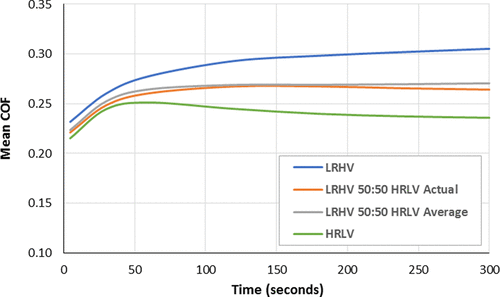当前位置:
X-MOL 学术
›
Energy Fuels
›
论文详情
Our official English website, www.x-mol.net, welcomes your
feedback! (Note: you will need to create a separate account there.)
Tribological Testing of Metallurgical Coke: Coefficient of Friction and Relation to Coal Properties
Energy & Fuels ( IF 5.2 ) Pub Date : 2018-10-30 00:00:00 , DOI: 10.1021/acs.energyfuels.8b01339 Hannah Lomas 1 , Richard Roest 1 , Tizshauna Thorley 1 , Adam Wells 1 , Hui Wu 2 , Zhengyi Jiang 2 , Richard Sakurovs 3 , Sharna Wotherspoon 1 , Richard A. Pearson 4 , Merrick R. Mahoney 1
Energy & Fuels ( IF 5.2 ) Pub Date : 2018-10-30 00:00:00 , DOI: 10.1021/acs.energyfuels.8b01339 Hannah Lomas 1 , Richard Roest 1 , Tizshauna Thorley 1 , Adam Wells 1 , Hui Wu 2 , Zhengyi Jiang 2 , Richard Sakurovs 3 , Sharna Wotherspoon 1 , Richard A. Pearson 4 , Merrick R. Mahoney 1
Affiliation

|
Tribological testing and analysis of metallurgical-grade cokes were conducted to elucidate the nature of the surface of each coke and the influence of the surface on coke abrasion resistance. The coefficient of friction (COF) was contrasted between cokes of different coal origins. The results indicate that the COF increases with (i) parent coal vitrinite content and (ii) decreasing rank of the parent coal. The amount of ultrafine (i.e., <10 μm at the longest dimension) material produced by coke during continuous rotational tribological testing increased as the rank of the parent coal increased. Above a parent coal mean maximum vitrinite reflectance of 1.37%, the COF began to decrease slightly beyond the first 40–60 s of testing, which can be attributed to the anisotropic, graphitic ultrafines acting as a surface modifier or lubricant. This has implications for the abrasion resistance of coke under blast furnace conditions, in which graphitic ultrafines acting a lubricant would likely reduce the degradation rate of the coke. For the pilot oven coke from the blend examined, the COF at all stages of the experiment was approximately linear with blend composition. The exploratory study described in this paper indicates that the wear characteristics of inertinite maceral derived constituents (IMDC) and reactive maceral derived constituents (RMDC) are different and that the wear behavior of the RMDC is rank dependent, while that of the IMDC is less sensitive to the rank of the initial coal.
中文翻译:

冶金焦的摩擦学测试:摩擦系数及其与煤性质的关系
进行了冶金级焦炭的摩擦学测试和分析,以阐明每种焦炭表面的性质以及该表面对焦炭耐磨性的影响。对比了不同产煤的焦炭之间的摩擦系数(COF)。结果表明,COF随着(i)母体煤镜质体含量的增加和(ii)母体煤级的降低而增加。连续旋转摩擦学测试中,焦炭产生的超细(即最长尺寸为<10μm)材料的数量随母煤等级的增加而增加。超过母体平均最大镜质体反射率1.37%,在测试的前40-60 s之后,COF开始略有下降,这可能是由于各向异性的石墨超细粉充当了表面改性剂或润滑剂。这对高炉条件下的焦炭的耐磨性有影响,在这种情况下,起润滑剂作用的石墨超细粉可能会降低焦炭的降解率。对于来自所检查的混合物的中试炉焦炭,在实验的所有阶段的COF与混合物的组成大致成线性关系。本文所述的探索性研究表明,惰化岩矿质衍生成分(IMDC)和活性岩矿质衍生成分(RMDC)的磨损特性是不同的,并且RMDC的磨损行为取决于等级,而IMDC的磨损行为较不敏感到最初的煤炭等级。对于来自所检查的混合物的中试炉焦炭,在实验的所有阶段的COF与混合物的组成近似线性。本文所述的探索性研究表明,惰化岩矿质衍生成分(IMDC)和活性岩矿质衍生成分(RMDC)的磨损特性是不同的,并且RMDC的磨损行为取决于等级,而IMDC的磨损行为较不敏感到最初的煤炭等级。对于来自所检查的混合物的中试炉焦炭,在实验的所有阶段的COF与混合物的组成大致成线性关系。本文所述的探索性研究表明,惰化岩矿质衍生成分(IMDC)和活性岩矿质衍生成分(RMDC)的磨损特性是不同的,并且RMDC的磨损行为取决于等级,而IMDC的磨损行为较不敏感到最初的煤炭等级。
更新日期:2018-10-30
中文翻译:

冶金焦的摩擦学测试:摩擦系数及其与煤性质的关系
进行了冶金级焦炭的摩擦学测试和分析,以阐明每种焦炭表面的性质以及该表面对焦炭耐磨性的影响。对比了不同产煤的焦炭之间的摩擦系数(COF)。结果表明,COF随着(i)母体煤镜质体含量的增加和(ii)母体煤级的降低而增加。连续旋转摩擦学测试中,焦炭产生的超细(即最长尺寸为<10μm)材料的数量随母煤等级的增加而增加。超过母体平均最大镜质体反射率1.37%,在测试的前40-60 s之后,COF开始略有下降,这可能是由于各向异性的石墨超细粉充当了表面改性剂或润滑剂。这对高炉条件下的焦炭的耐磨性有影响,在这种情况下,起润滑剂作用的石墨超细粉可能会降低焦炭的降解率。对于来自所检查的混合物的中试炉焦炭,在实验的所有阶段的COF与混合物的组成大致成线性关系。本文所述的探索性研究表明,惰化岩矿质衍生成分(IMDC)和活性岩矿质衍生成分(RMDC)的磨损特性是不同的,并且RMDC的磨损行为取决于等级,而IMDC的磨损行为较不敏感到最初的煤炭等级。对于来自所检查的混合物的中试炉焦炭,在实验的所有阶段的COF与混合物的组成近似线性。本文所述的探索性研究表明,惰化岩矿质衍生成分(IMDC)和活性岩矿质衍生成分(RMDC)的磨损特性是不同的,并且RMDC的磨损行为取决于等级,而IMDC的磨损行为较不敏感到最初的煤炭等级。对于来自所检查的混合物的中试炉焦炭,在实验的所有阶段的COF与混合物的组成大致成线性关系。本文所述的探索性研究表明,惰化岩矿质衍生成分(IMDC)和活性岩矿质衍生成分(RMDC)的磨损特性是不同的,并且RMDC的磨损行为取决于等级,而IMDC的磨损行为较不敏感到最初的煤炭等级。











































 京公网安备 11010802027423号
京公网安备 11010802027423号